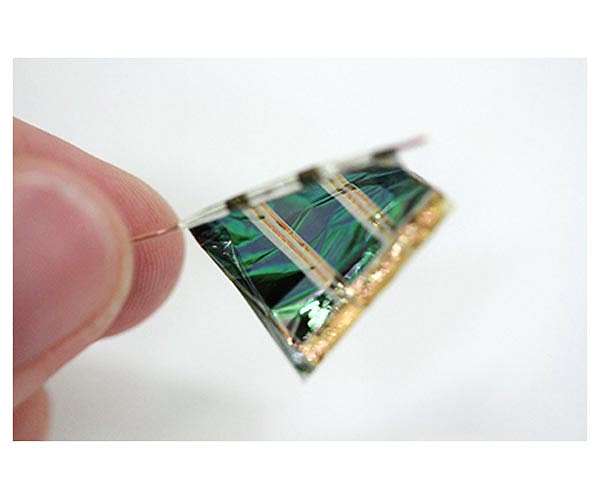Molecular adjustments boost efficiency of organic solar cells
by Riko Seibo
Osaka, Japan (SPX) Sep 15, 2024
Organic solar cells (OSCs) offer a promising alternative to traditional inorganic solar cells, thanks to features such as tunable chemistry that allow scientists to precisely alter their properties for improved performance. Researchers in Japan have now used this tunability to achieve higher power conversion efficiency in OSCs.
A recent study published in ‘Angewandte Chemie International Edition’ by researchers at Osaka University reports the development of a new organic semiconductor that surpasses the power conversion efficiency of the standard models.
OSCs are lightweight, flexible, and can be mass-produced at relatively low costs, making them highly suitable for applications like agrivoltaics, where vast areas are used both for agriculture and solar energy production.
Typically, OSCs are composed of two organic semiconductors: one that transports electrons (the acceptor) and one that transports holes (the donor). When excitons – combinations of electrons and positive holes – split into their components, a current is generated. The challenge lies in breaking these tightly bound excitons with enough energy from sunlight to create a usable current.
“Reducing the amount of energy needed to break up an exciton – the exciton binding energy – makes it easier to convert the light into the desired current,” explained Seihou Jinnai, lead author of the study. “We therefore focused on the factors that contribute to the binding energy, one of which is the distance between the electron and the hole. If this is increased, then the binding energy should decrease.”
To address this, the researchers designed a molecule with side units that separated the parts of the molecule responsible for holding the electron and the hole. This molecule was tested as an acceptor in a bulk heterojunction OSC alongside a donor material, and the system demonstrated improved power conversion efficiency compared to standard models. It also performed well as the sole component in an OSC, efficiently converting light into current.
“The molecule we designed shows that the nature of side units in acceptor molecules is key to the exciton behavior and its efficiency as a result,” said Yutaka Ie, senior author of the study. “This result provides an important demonstration of what can be achieved by tuning chemistry for OSCs applications.”
The research suggests that rational design of organic semiconductors could lead to the development of new, high-performance OSCs, including wavelength-selective transparent models. Such advancements are expected to improve the role of OSCs in large-scale photovoltaic applications, contributing to sustainable energy solutions.
Related Links

